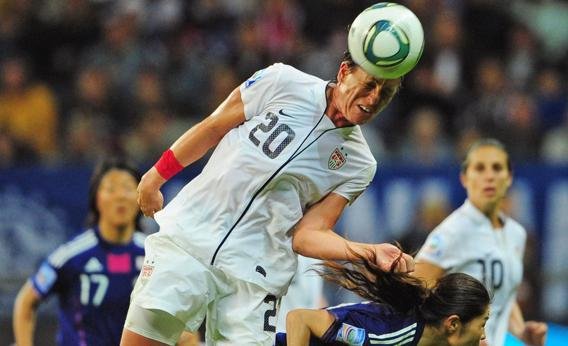Soccer/Football with Injuries
Over the past few years, a lot of emphases has been put on the significance and consequence of head injuries that are involved in sports. According to researchers at Purdue University, 22 percent of soccer injuries are the result of players using their heads to direct the ball during a soccer game. To prevent and reduce the risk of injury, the researchers recommend inflating balls to lower pressure and swapping them when they get wet. The basic idea is preventing how hard the ball hits the head.
Research can Reduce Head Injuries
According to research conducted, inflating balls to pressures on the lower end of ranges enforced by soccer governing bodies, including the NCAA and FIFA, could reduce about 20 percent of force associated with a potential head injury. The study also says that if the ball gets too wet, it can quickly surpass the NCAA weight limit for gameplay while producing a significant impact.

A ball can be turned into a weapon if the ball has too high of pressure or is too saturated as per researcher Eric Nauman, which is lethal. At the start of the game, the soccer ball is checked for ball pressure, size, mass, and water absorption by the soccer governing bodies. Evaluation of the effects by the change of parameter of each ball which lead to the production of the impact connected with potential neurophysiological changes is done in the Purdue Study.
Ball Pressure and Water Absorption
Researchers found out by evaluating the ball velocity is a contributor to the most for injuries that how hard the ball is hit. But the major lead is that ball pressure and water absorption are more realistic to control at the best. According to a recent study, on average a professional soccer player receives the ball 12 times in form of the header in a single game, and in an entire season, this count is over 800 times. At the lower end of permitted pressure ranges, the ball’s peak impact force already lines up with pressures defined by the manufacturer on the ball.
The new study has also shed light on the fact that the weight and impact of the ball can vary with different conditions. The team is hoping that sports governing bodies and manufacturers will use the knowledge gained from this research to further reduce the risk of injury due to head impacts during normal soccer gameplay. The team evaluated three soccer ball sizes in their study, these sizes are 4, 4.5, and 5.

2 Comments
Pingback: EA issues lifetime ban to FIFA player who sent abusive messages to ex-footballer Ian Wright after losing a game - Craffic
Pingback: The Psychology Behind Missing a Penalty in Soccer/Football - Craffic